Modica - City of Chocolate and Baroque Architecture
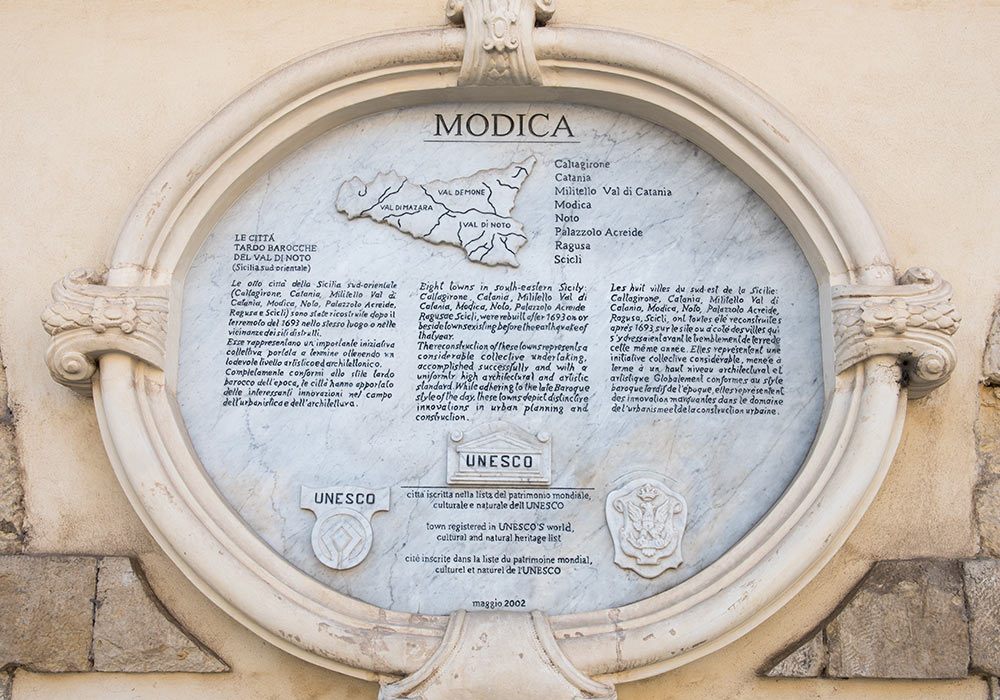
Modica is registered in UNESCO's world cultural and natural heritage list.
Together with seven other cities in the Val di Noto, Modica is listed among the UNESCO World Heritage Sites. First occupied by the Sicels, the site of Modica was later taken over by the Greeks and the Romans. Under the Normans it became a county, one of the most powerful fiefs of the Middle Ages. After the disastrous earthquake in 1693, Modica had to be rebuilt. By the end of the 17th century, Modica was the fourth largest town in Sicily.Modica divided into two parts, Modica Bassa (lower town) and Modica Alta (upper town).
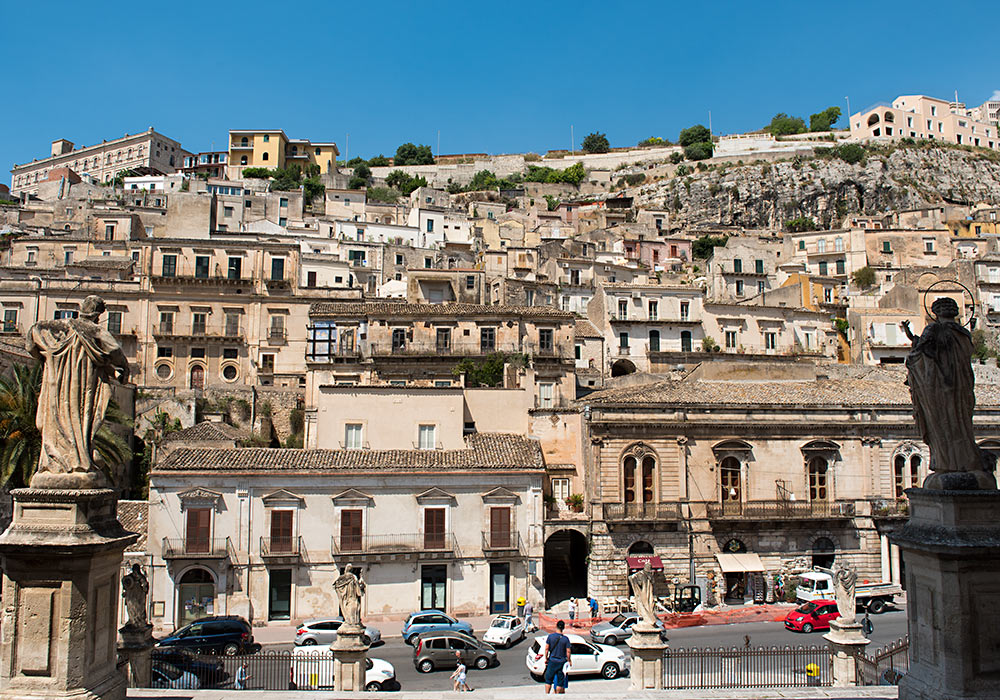
A part of Modica seen from the church of San Pietro (Chiesa Madre S. Pietro Apostolo).
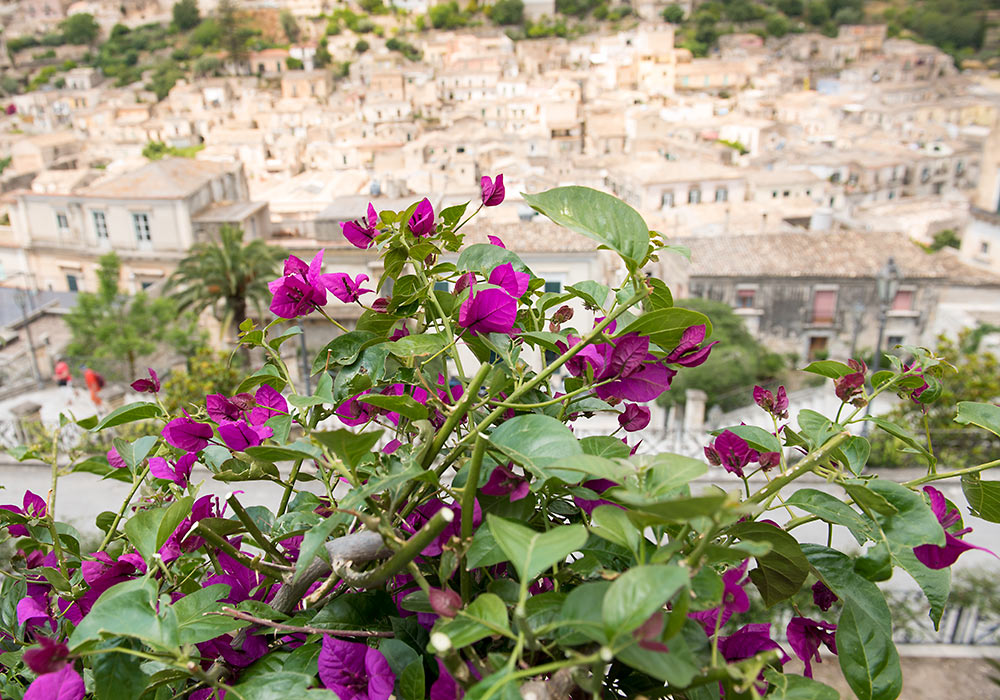
View of Modica from the stairs leading up to the cathedral.
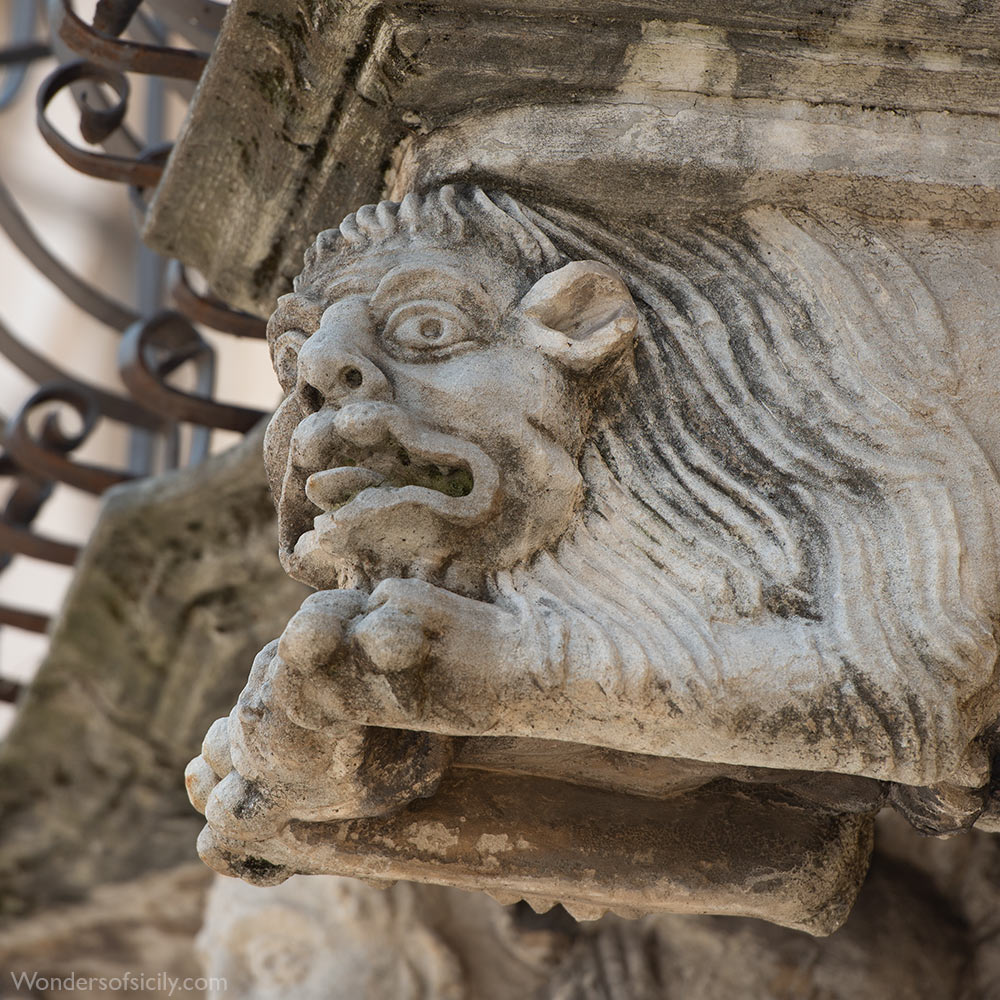
Detail of a corbel below a balcony in Modica showing a lion monster.
Sicilian Sites on UNESCO's World Heritage List
- Agrigento: Archaeological Area of Agrigento (UNESCO)
- Aeolian Islands: Isole Eolie. The group consists of seven islands (Lipari, Vulcano, Salina, Stromboli, Filicudi, Alicudi and Panarea) and five small islets (Basiluzzo, Dattilo, Lisca Nera, Bottaro and Lisca Bianca) in the vicinity of Panarea. (UNESCO)
- Caltagirone (UNESCO)
- Catania (UNESCO)
- Cefalù Cathedral
- Militello Val di Catania (UNESCO)
- Modica (UNESCO)
- Monreale Cathedral
- Mount Etna (UNESCO)
- Noto (UNESCO)
- Palermo: Palazzo dei Normanni (The Norman Palace)
- Palermo: Cappella Palatina (The Palatine Chapel in the Norman Palace)
- Palermo: Church of San Giovanni degli Eremiti
- Palermo: Church of Santa Maria dell'Ammiraglio (also known as the Martorana)
- Palermo: Church of San Cataldo
- Palermo: Cathedral of Palermo
- Palermo: The Zisa Palace (La Zisa)
- Palermo: The Cuba Palace (La Cuba)
- Palazzolo Acreide (UNESCO)
- Ragusa (UNESCO)
- Scicli (UNESCO)
- Syracuse and the Rocky Necropolis of Pantalica (UNESCO)
Modica Cathedral - The Duomo of San Giorgio
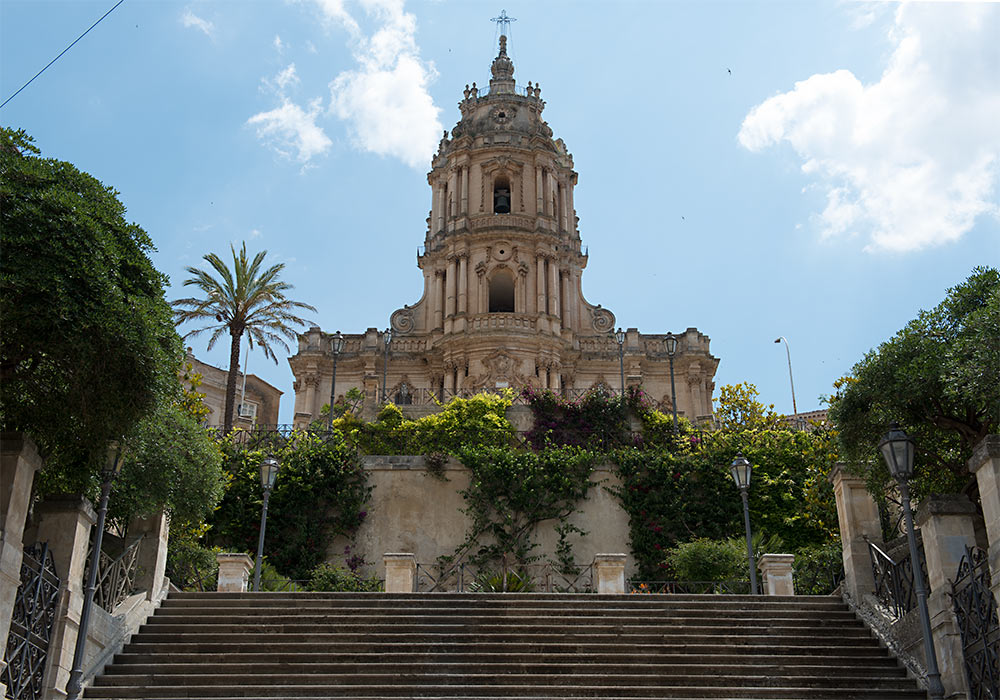
The San Giorgio cathedral in Modica.
The Duomo of San Giorgio, a landmark of Modica Alta, was constructed between the 11th century and 1848, mainly by local stonemasons. Architect Paolo Labisi later directed its completion, dedicating it to the city’s patron saint, Saint George. Accessible via Corso Garibaldi, it is reached by climbing 250 steps. Made from beautiful honey-colored stone, the church’s Baroque façade, with five doorways and a towering central bell tower, is among Italy’s finest.
Inside, the double side aisles and central nave lead to an apse featuring a large polyptych by Bernardino Niger (1573), depicting Gospel scenes and the life of St George. The silver high altar, created in 1705, complements works like Filippo Paladini’s Assumption (1610) and a 16th-century Nativity. Nearby chapels house a revered equestrian statue of St George and Giuliano Mancino’s Madonna of the Snow (1511). A meridian on the transept floor, traced in 1895 by Armando Perini, and the Serassi organ (1886–8) are notable features. The church also preserves a 14th-century Venetian silver ark containing St George’s relics.
Adjacent is the Palazzo Polara, offering views of the lower town. Behind San Giorgio lies Palazzo Tomasi-Rossi, known for its ornate balconies. Poet Salvatore Quasimodo (1901–68), a Nobel laureate, was born nearby.
San Giorgio
The story of Saint George begins with his birth in Cappadocia around 280 AD. Raised as a Christian by his mother, George became a soldier, eventually rising to the rank of tribune in the imperial guard. During one occasion when the emperor consulted pagan priests for omens using animal entrails, Christian guards marked their foreheads with the sign of the cross. This enraged the emperor, who ordered their punishment and issued an edict requiring Christian clergy to sacrifice to pagan gods. George, upon seeing the edict posted on the palace gates, tore it down. For this act, he was arrested, tortured, and ultimately beheaded. Even this restrained version of his story is likely embellished.
Saint George was venerated in the East as megalomartyros ("great martyr") and in the West, appearing in both Hieronymus' martyrology and the Gregorian Sacramentary. By the 6th century, churches in Jerusalem and Antioch were dedicated to him. He became the patron saint of Byzantine armies, with his cult spreading to Cyprus, Cappadocia, Georgia, Russia, and the Balkans. His life was later described by Pasicrates in the 6th century, though his accounts are unverified. Versions of George's story appear in Greek, Latin, Armenian, Coptic, Syriac, Ethiopian, and Turkish.
George earned the title “the first knight after Christ’s birth” and served Emperor Diocletian’s guard. Legends about him are varied, with the famous tale of Saint George and the Dragon gaining immense popularity in the West through Jacobus de Voragine’s Legenda Aurea in the 13th century.
The legend recounts how George saved Princess Cleolinda of Silene in Libya from a dragon. After slaying the beast, he converted the town to Christianity. Later, George was tortured for his faith, enduring miraculous survival before being martyred by beheading during Diocletian's persecutions.
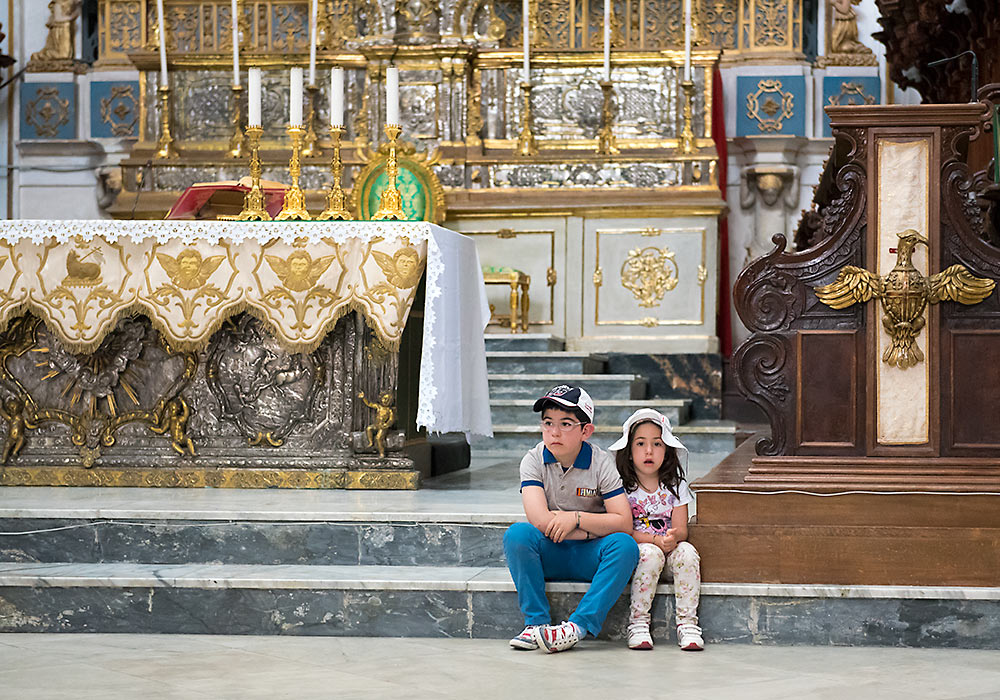
Children waiting in the Modica Cathedral.
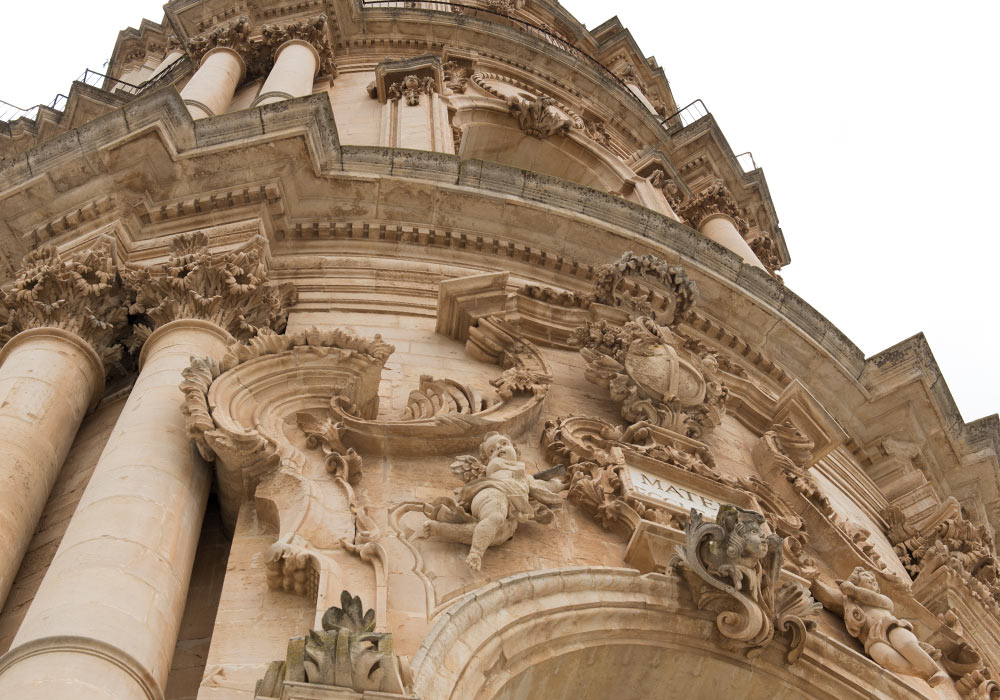
Detail of the cathedral's facade.
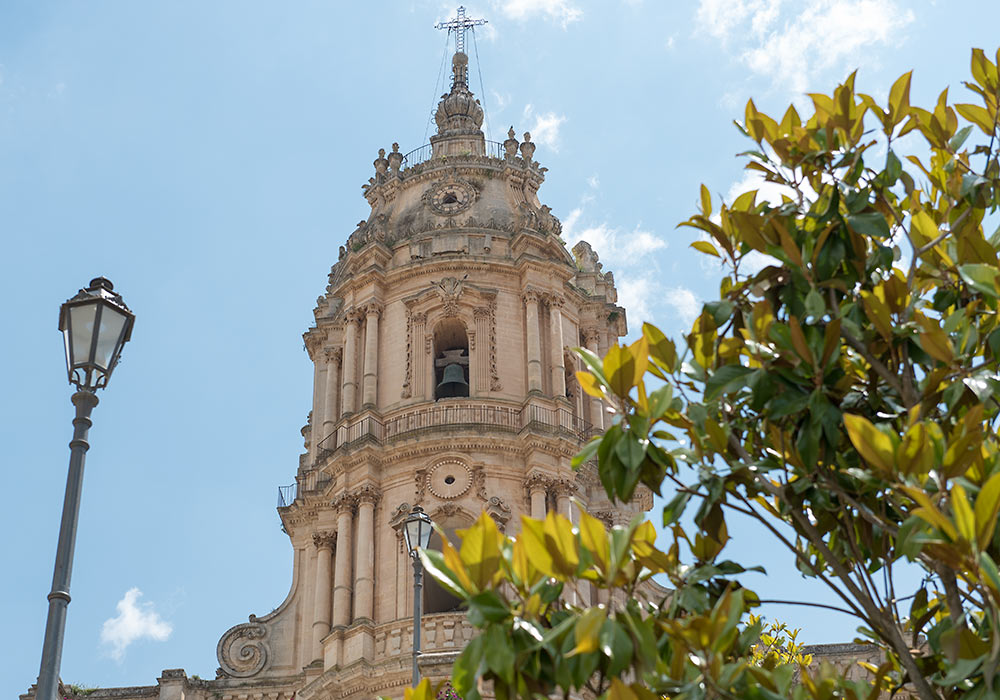
The cathedral's magnificent bell tower.
The church of San Pietro in Modica
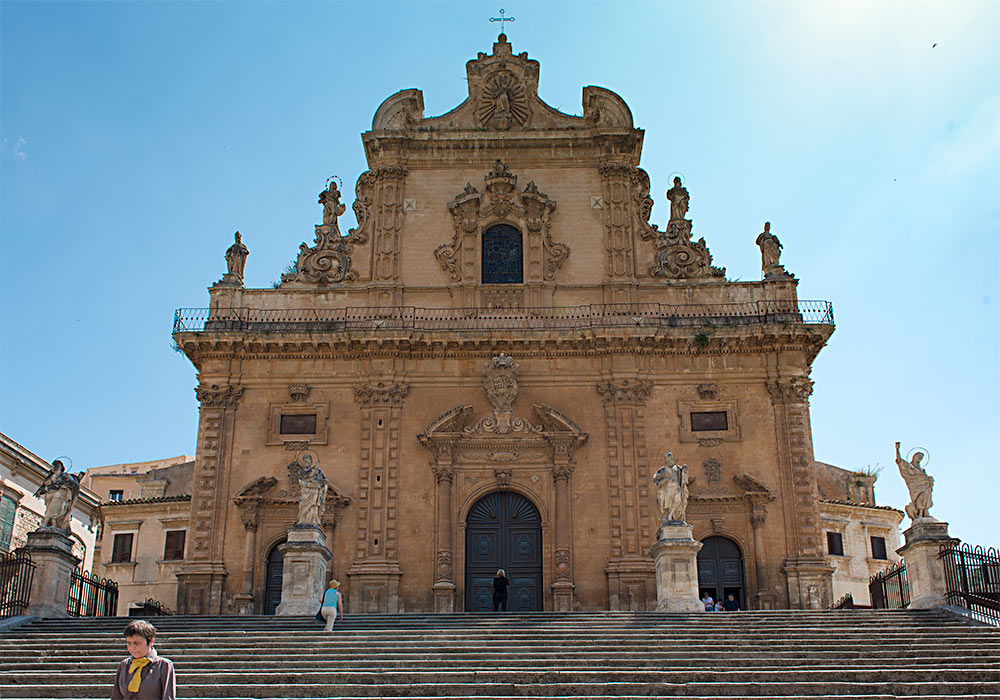
The beautiful baroque facade of the church of San Pietro in Modica. Note the balcony.
Inside the church there is a Madonna di Trapani by the Gagini school. The church "must have been built in the early decades of the eighteenth century", according to Anthony Blunt ("Sicilian Baroque", 1968).
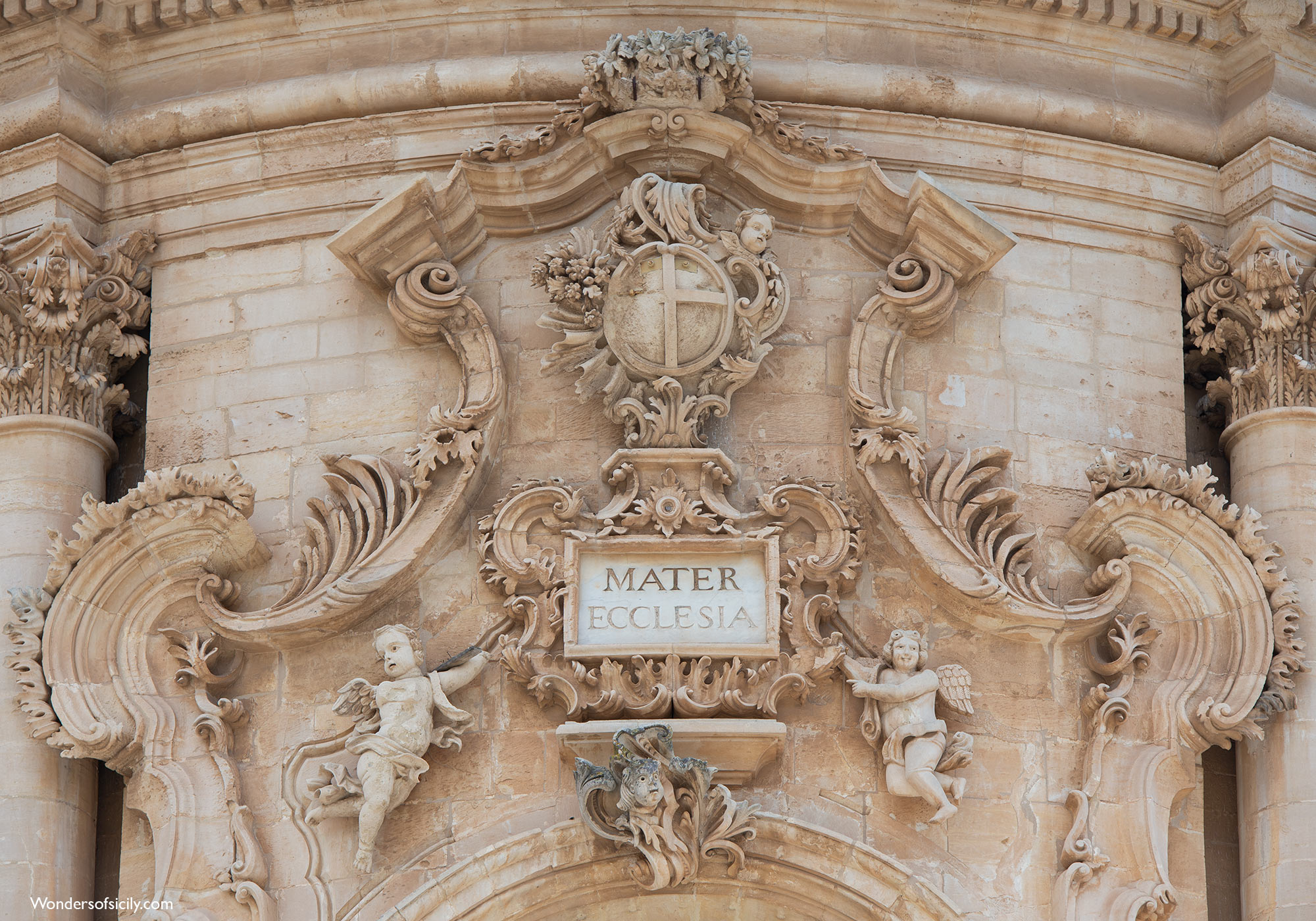
Detail of the entrance at the church of San Pietro.
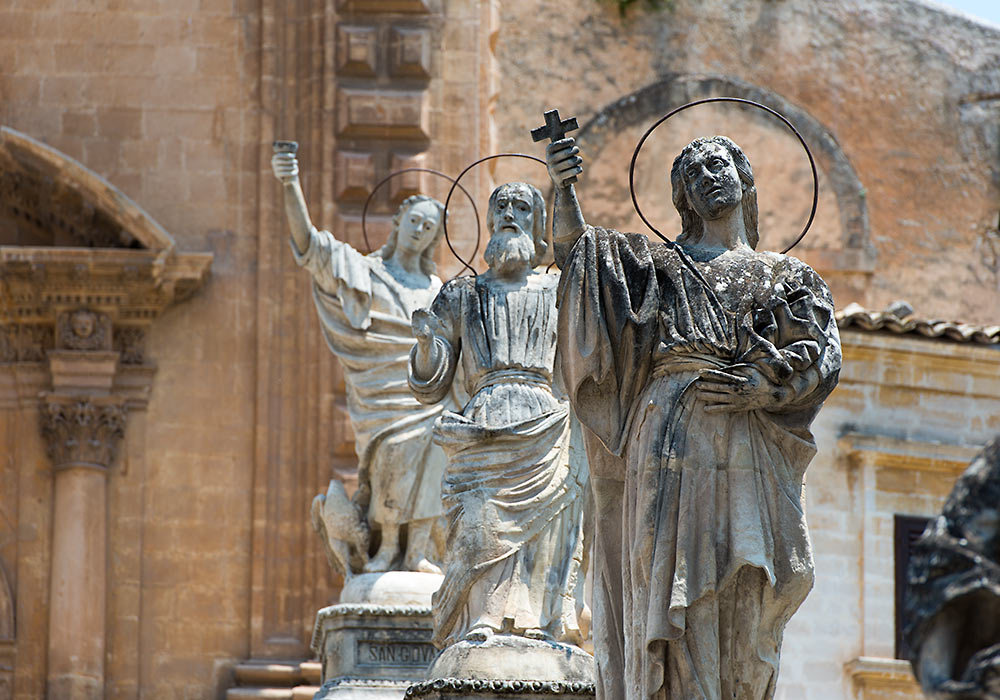
Statues of the apostles on the stairs leading up to the church of San Pietro in Modica.
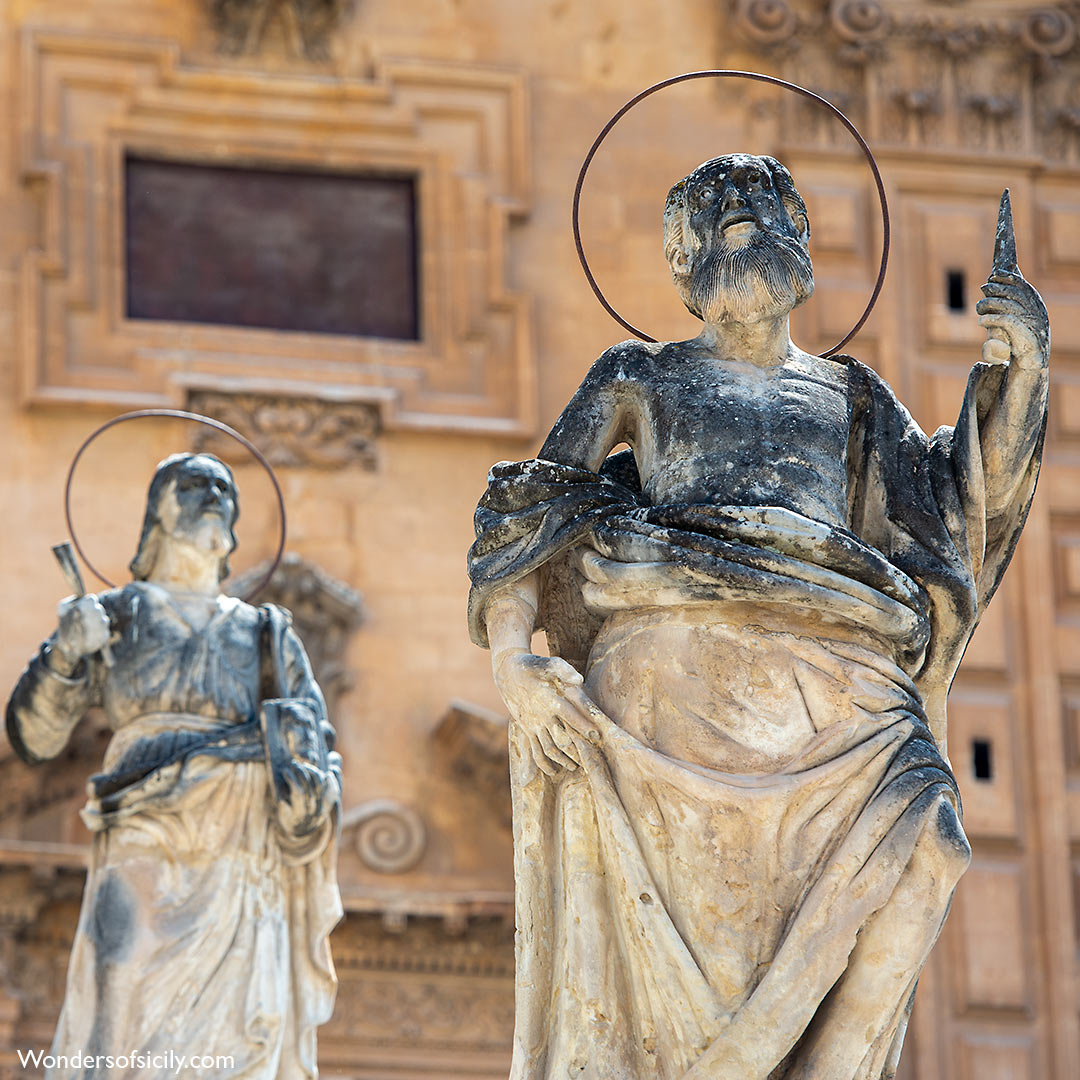
Statues of the apostles on the stairs leading up to the church of San Pietro in Modica. To the right is San Bartolomeo. To the left is San Giuda (Italian for Saint Jude or Judas Thaddeus).
San Bartolomeo (Saint Bartholomew) was one of the twelve apostles of Jesus. Bartholomew (aramaic: Bar Tolmai», son of Tolmai) was a native of Cana in Galilee and was one of the apostles present at the Last Supper. He is said to have preached the gospel in several countries, including India, and to have been martyred in Armenia. Saint Bartholomew is considered the patron saint of bookbinders, tanners, and leather workers, among others. His feast day is celebrated on August 24th in the Western Christian tradition and on June 11th in the Eastern Orthodox Church.
San Giuda Taddeo (Saint Jude or Judas Thaddeus) is one of the twelve apostles of Jesus and is venerated as a saint by the Catholic, Orthodox, and Anglican Churches. He is often invoked as a patron saint for difficult or hopeless cases, and is known as the "patron saint of lost causes." According to the New Testament, Saint Jude was a close relative of Jesus and was one of the original twelve apostles chosen by Jesus to spread his message. The feast day of Saint Jude is celebrated on October 28th in the Western Christian tradition and on June 19th in the Eastern Orthodox Church.
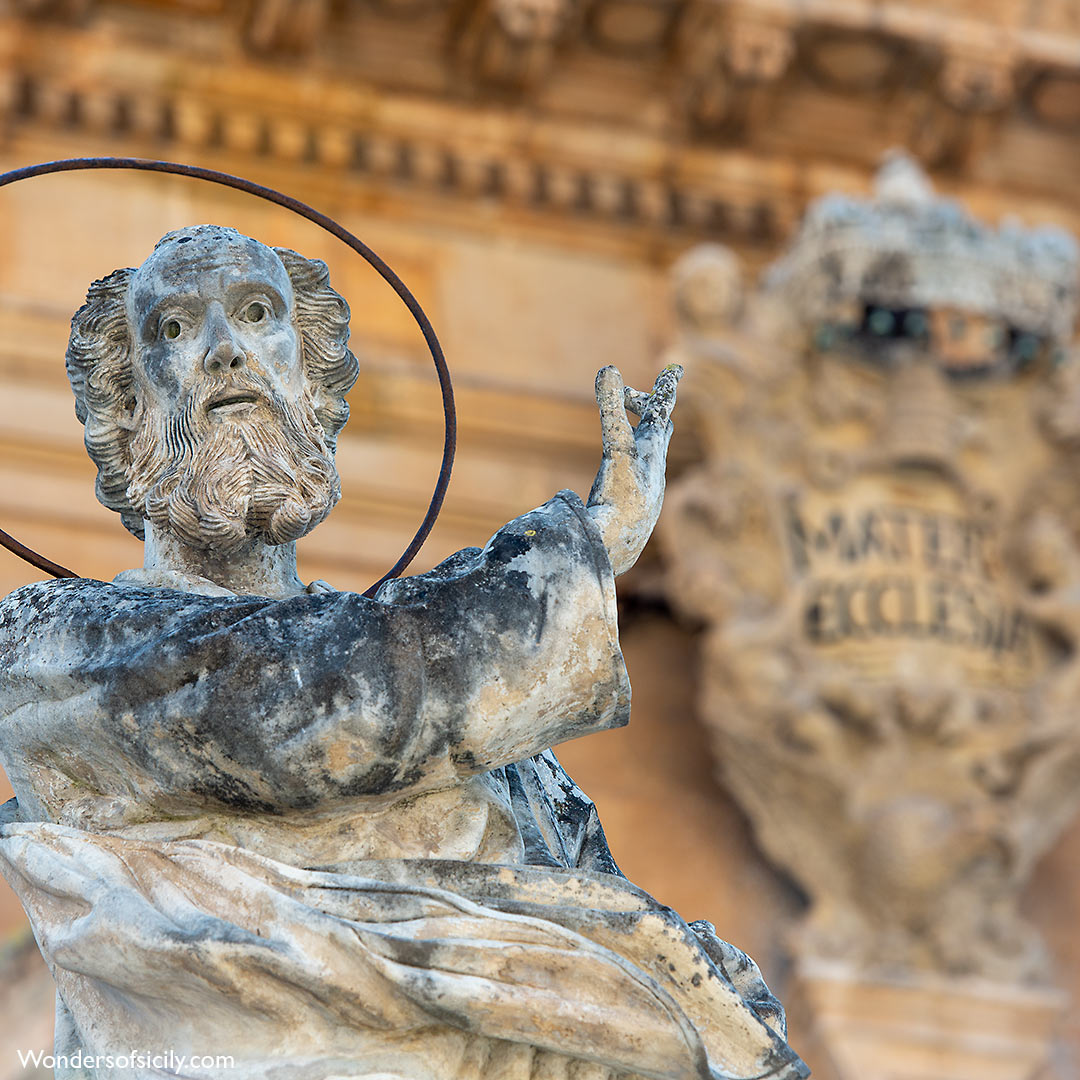
“San Pietro Patrono” - the patron saint of the Church bearing his name.
Saint Peter was one of the twelve apostles of Jesus. He is venerated as the first Pope by the Catholic Church. He was a fisherman from the town of Bethsaida on the Sea of Galilee and was called by Jesus to be a disciple and an apostle. In the New Testament, he is portrayed as a leader among the apostles and is often referred to as Simon Peter. According to tradition, Saint Peter was crucified during the reign of the Roman Emperor Nero. He is considered the first bishop of Rome and is regarded as the founder of the papacy. Saint Peter is one of the most important figures in Christianity, and is revered as a saint by many different Christian denominations. His feast day is celebrated on June 29th in the Western Christian tradition and on January 16th in the Eastern Orthodox Church.
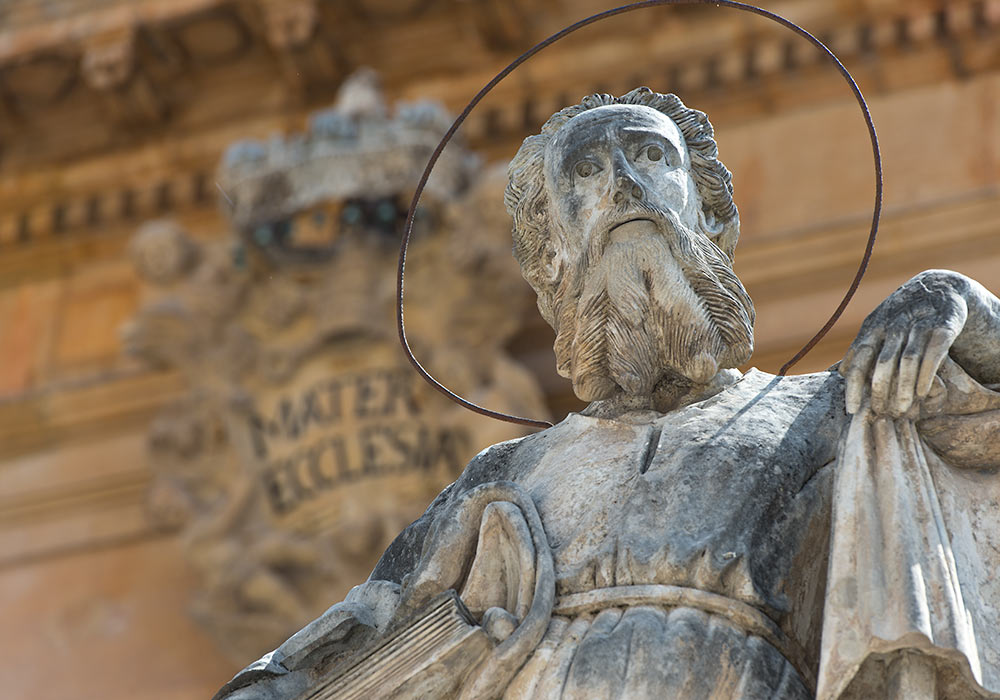
Statue of St Paul (San Paolo) outside the church San Pietro in Modica.
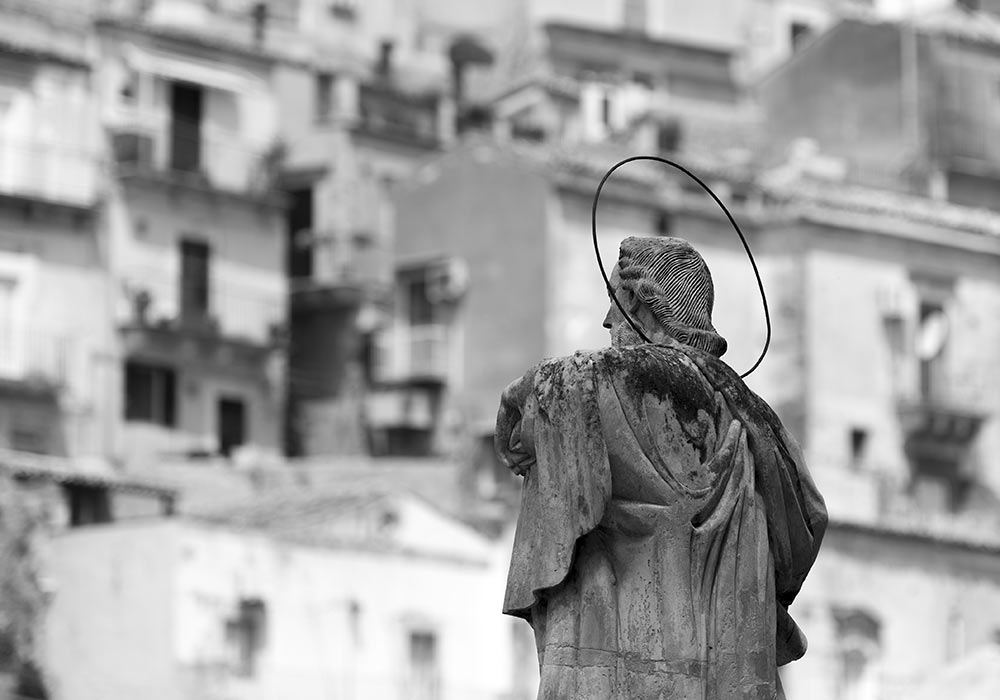
Statue of one of the apostles outside San Pietro, a church completely rebuilt after the eartquake in 1693.
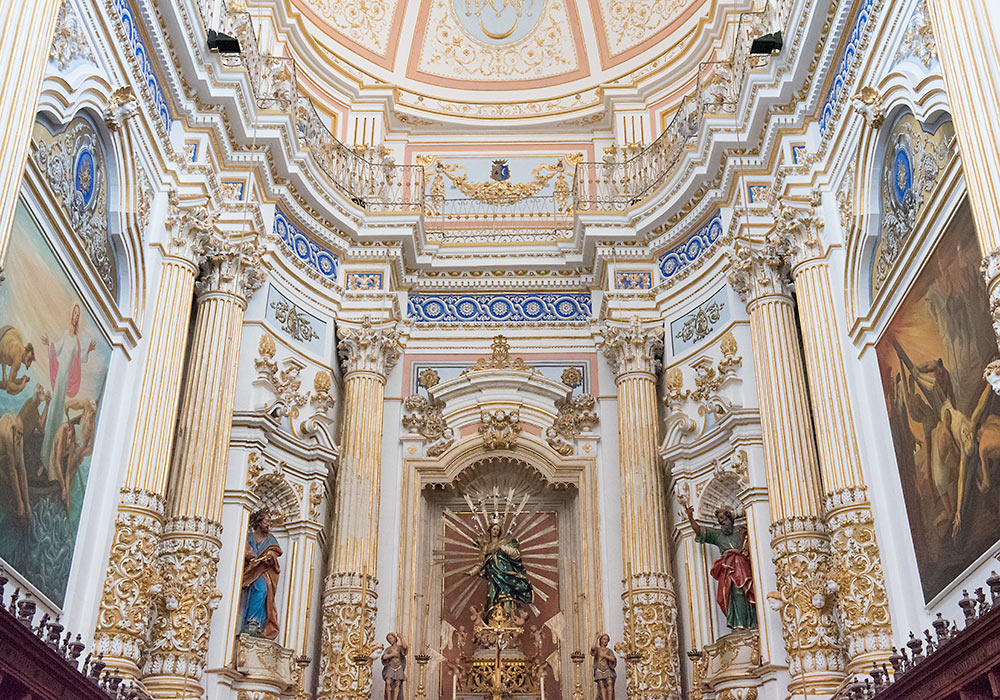
The lavish interior of the church San Pietro.
Modica chocolate
During the 16th century, chocolate was made using an ancient Aztec method, and the chocolate is basically still made the same way. Sugar is used only to a very small degree, and the consistency is grainy and characterized by unusual tastes of lemon, ginger, vanilla, cardamom, chilli pepper, cinnamon etc. The cocoa mass varies from 70 to 100%. The cocolate is definitely an aquired taste, and not likely to be appreciated by palates who have been bombarded by ridiculous high amounts of sugar.
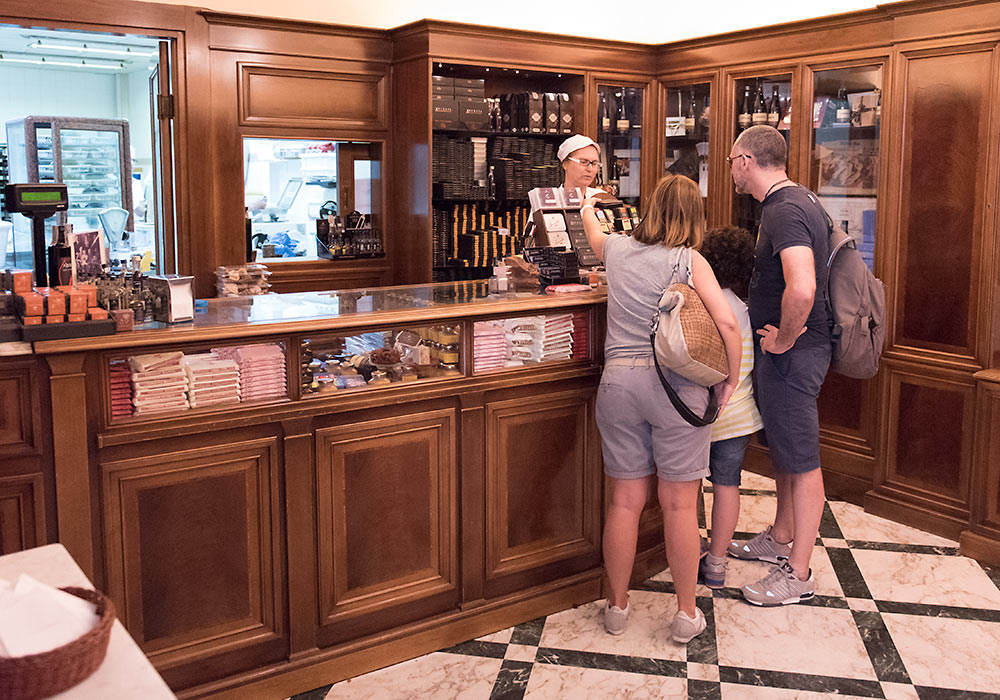
Chocolate for sale at Antica Dolceria Bonajuto in Modica. And the chocolate is made in the adjacent room behind the shop.
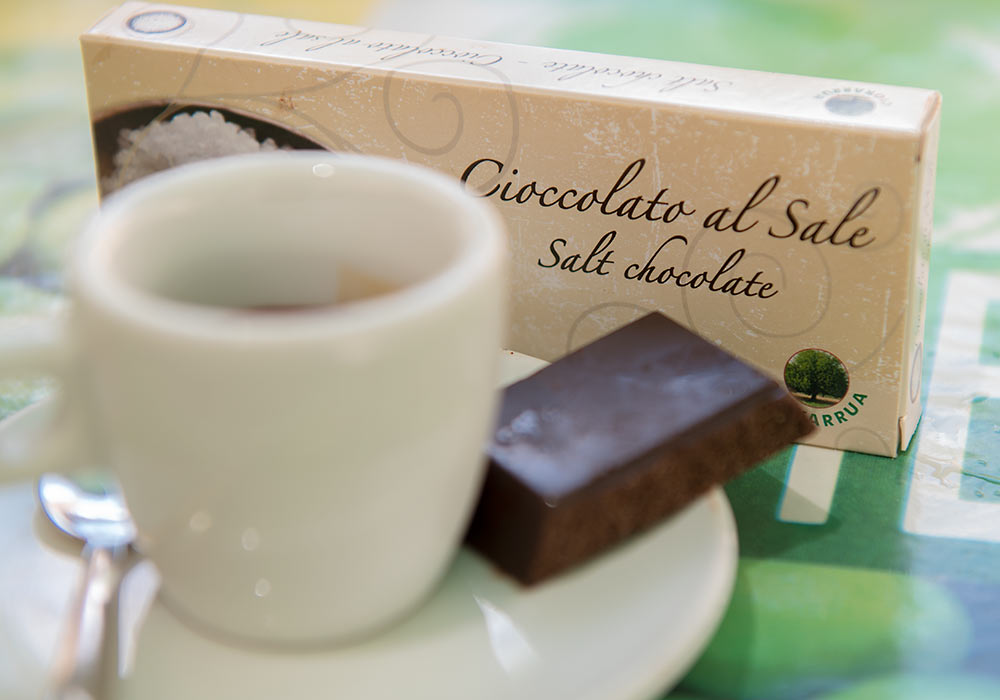
Espresso and salt chocolate.
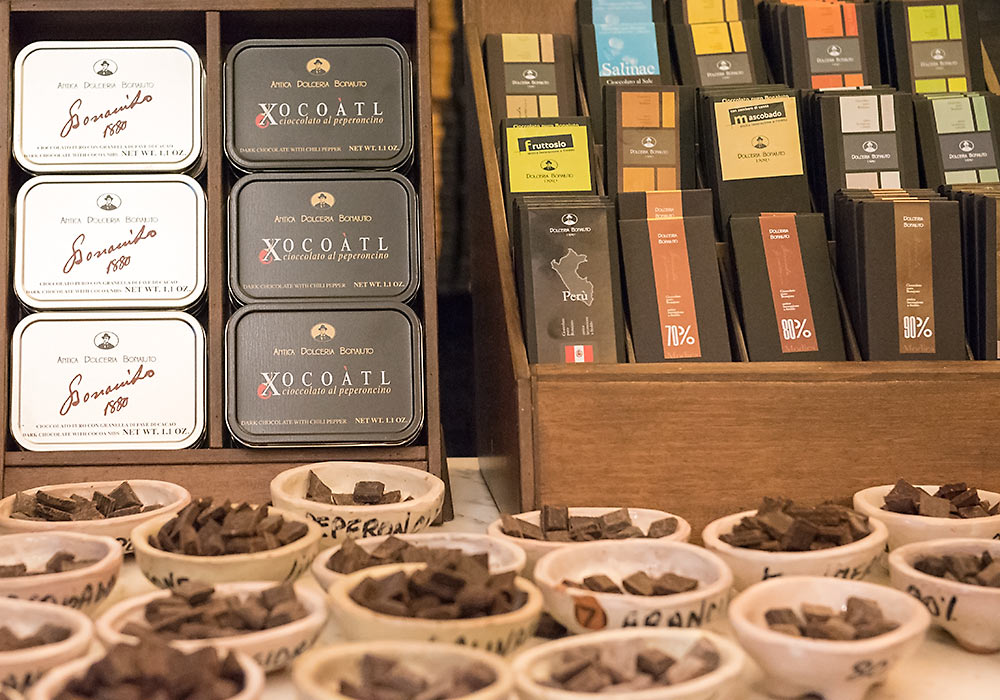
Chocolate at Antica Dolceria Bonajuto in Modica.
You can order chocolate from Antica Dolceria Bonajuto in Modica here!
The church of Santa Maria del Carmelo (Santa Maria dell'Annunziata)
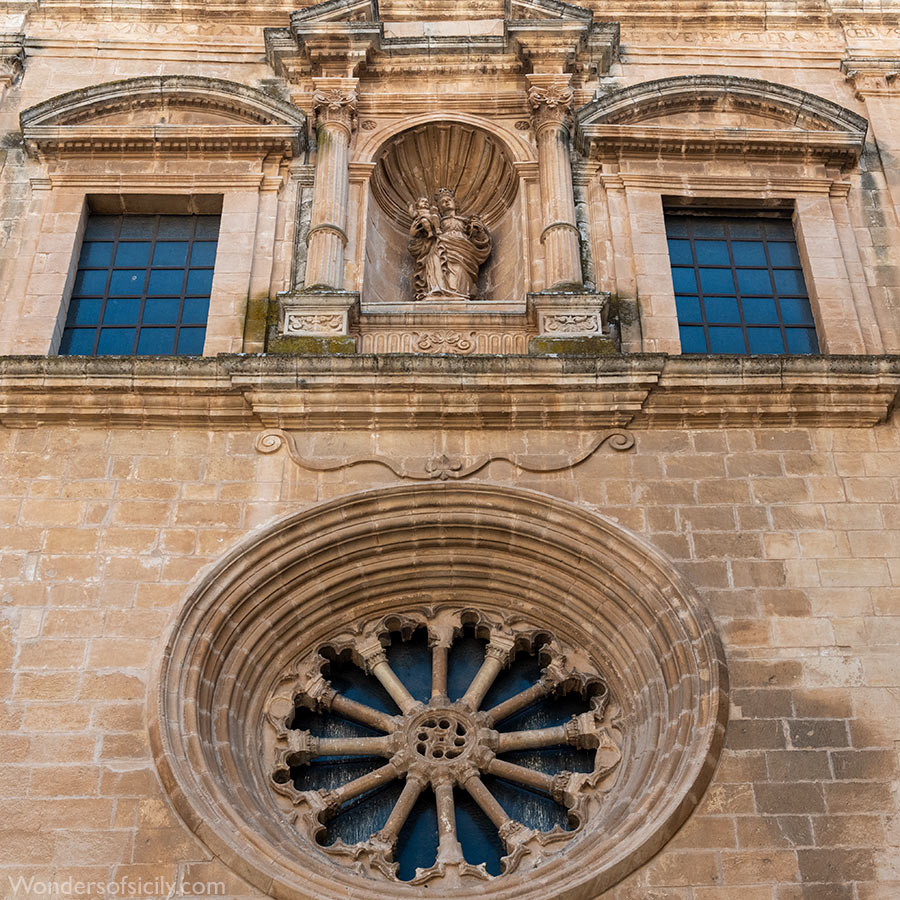
The church of Santa Maria del Carmelo (Santa Maria dell'Annunziata). The Carmelite church and convent was established by 1390. Most of the church survived the 1693 Sicily earthquake, retaining some of the gothic and romanesque elements, including the portal.
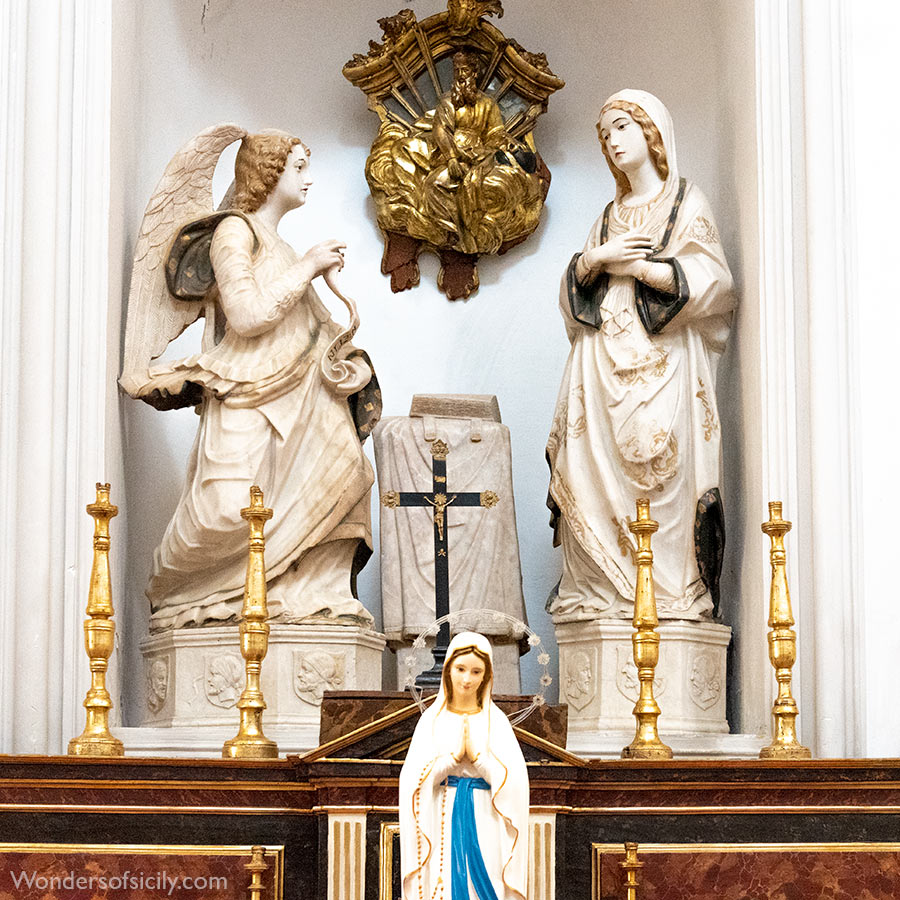
The Annunciation by an unknown artist (16th century). In The church of Santa Maria del Carmelo (Santa Maria dell'Annunziata), Modica.
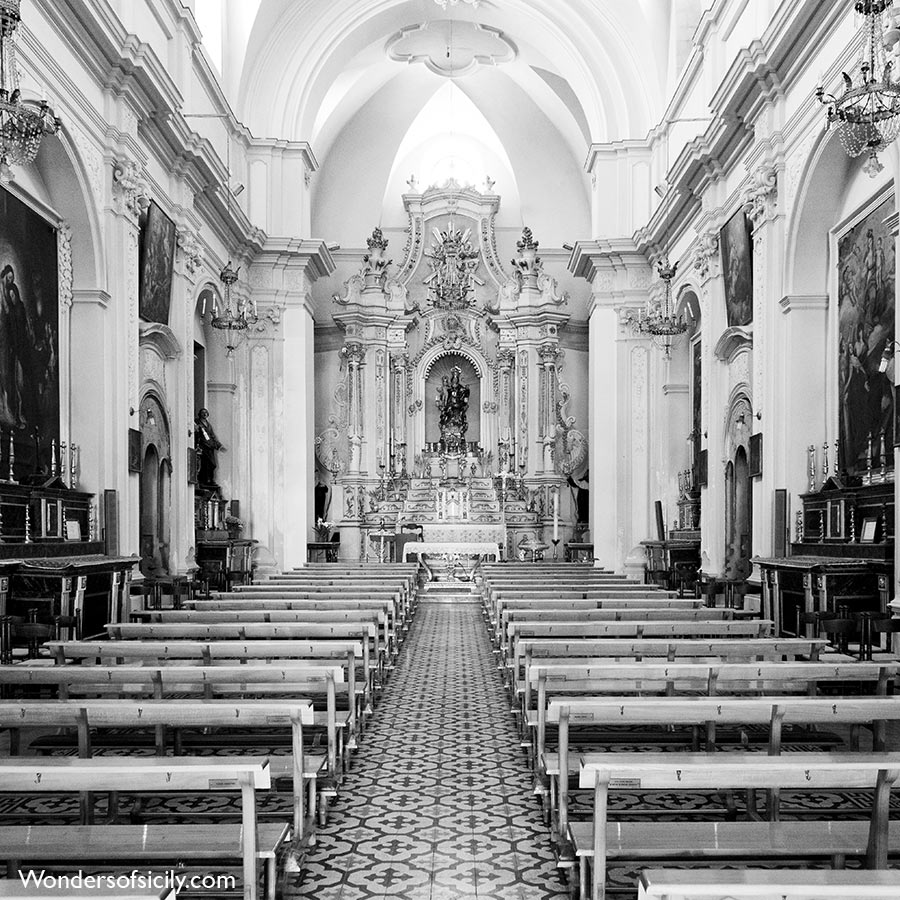
The interior of the church of Santa Maria del Carmelo.
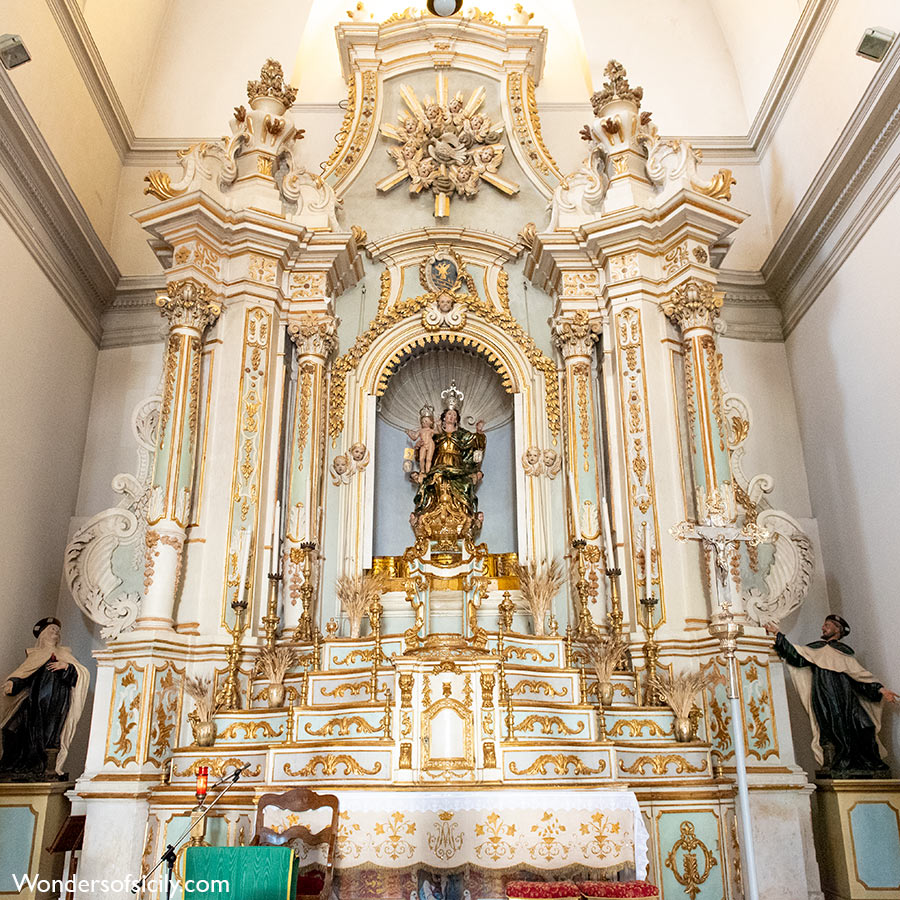
The high altar.
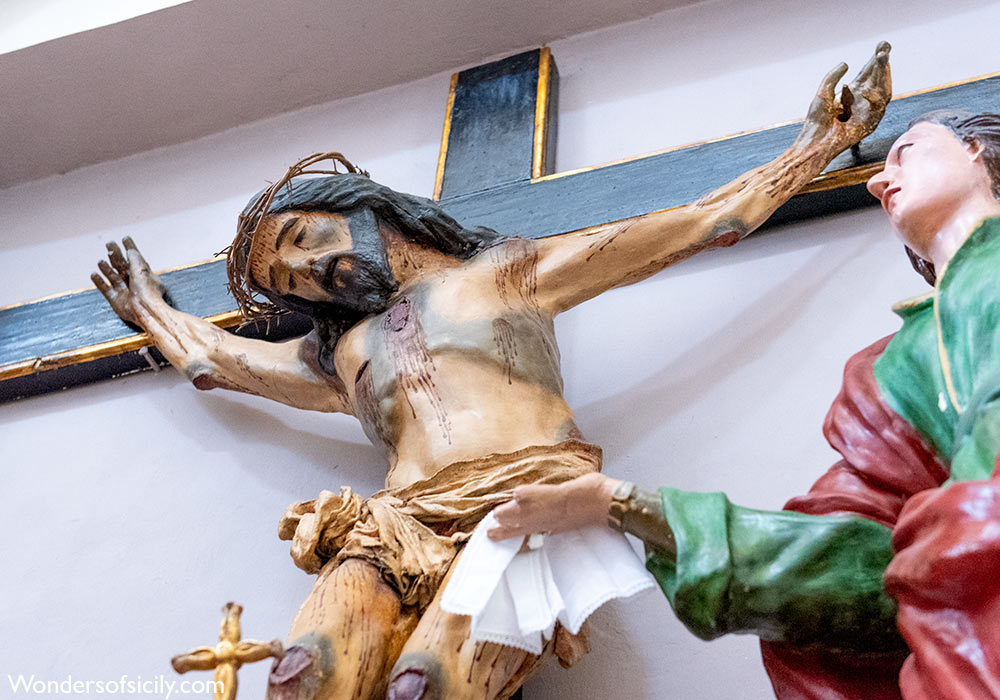
Crucifix in the church of Santa Maria del Carmelo.
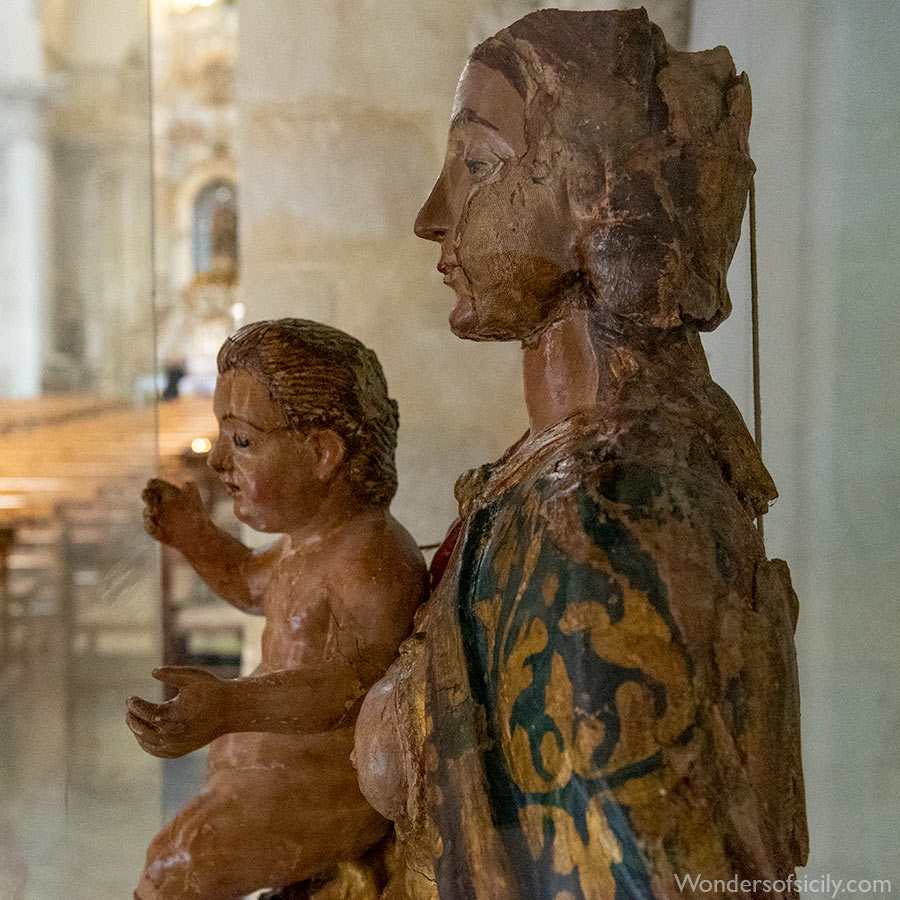
A statue of the Madonna and the child Jesus in a glass display case in the church S. Maria dell'Annunziata.
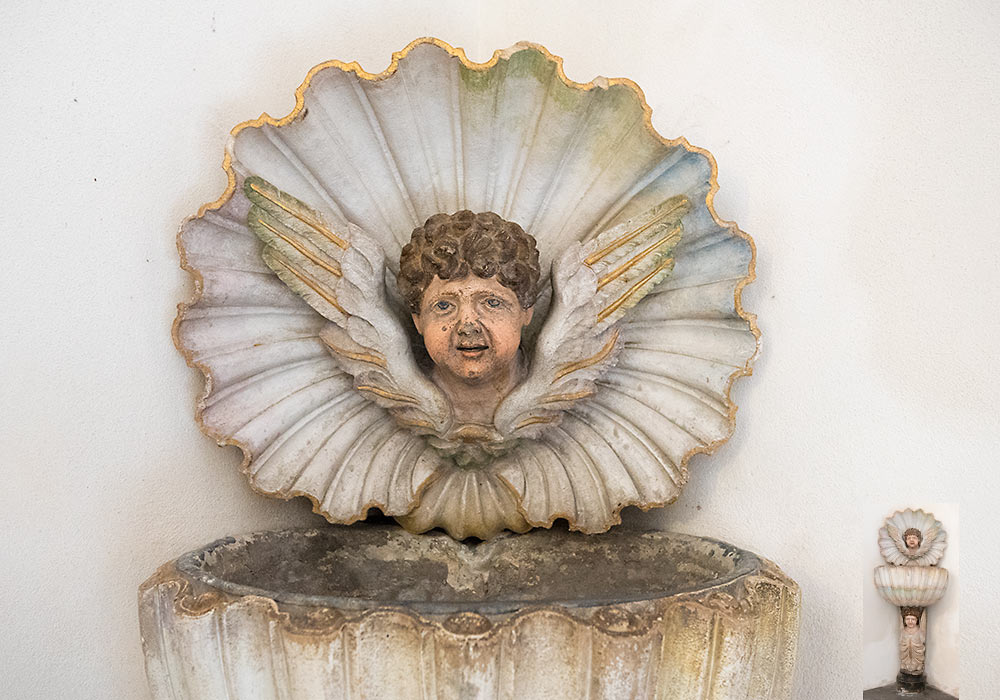
Detail of a baptismal font in the church S. Maria dell'Annunziata (15th - 18th century) in Modica.
Val di Noto
Is Modica worth visiting?
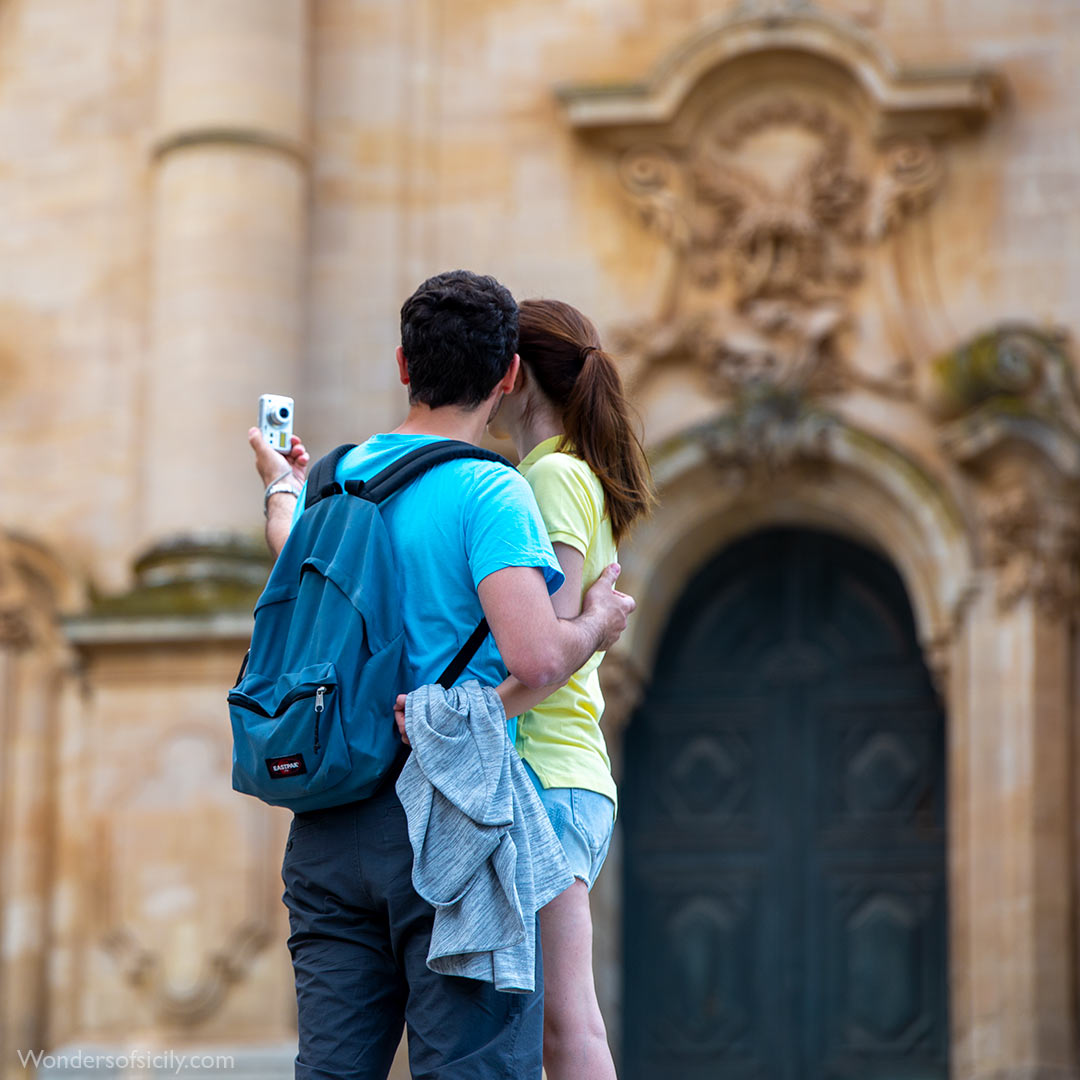
Modica is definitely a town worth visting. It is one of the threee baroque wonders of southern Sicily; the other two are Ragusa and Noto. All three were rebuilt after the devastating earthquake in 1693. A very beautiful town, Modica is rich in architecture and atmosphere, and has many beautiful churches.
The distance between Modica and some other cities in Sicily
Modica-Noto 36 km
Modica-Siracusa 75 km
Modica-Ragusa 15 km
Modica-Agrigento 147 km
Modica-Palermo 270 km
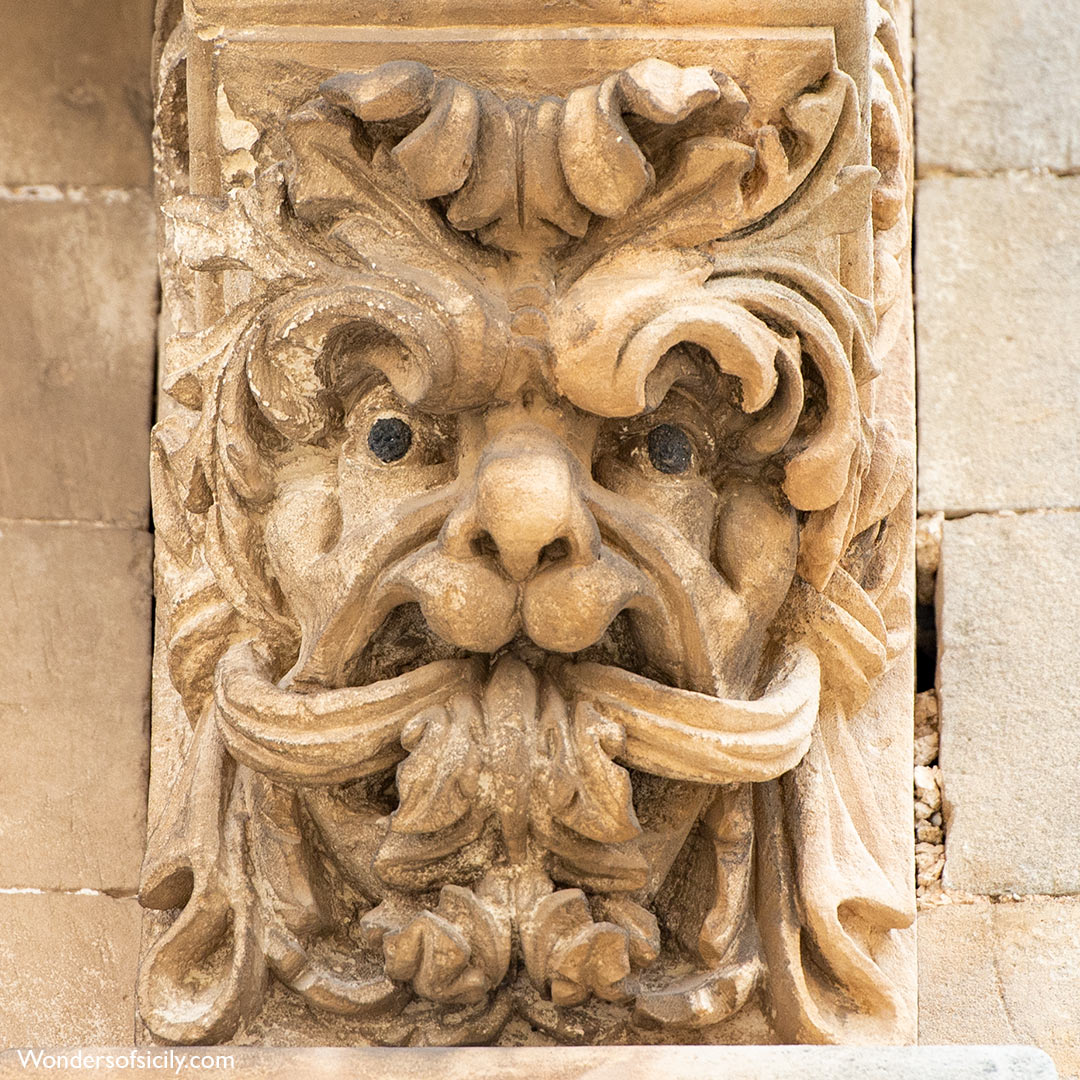
Corbel (?) in Modica.
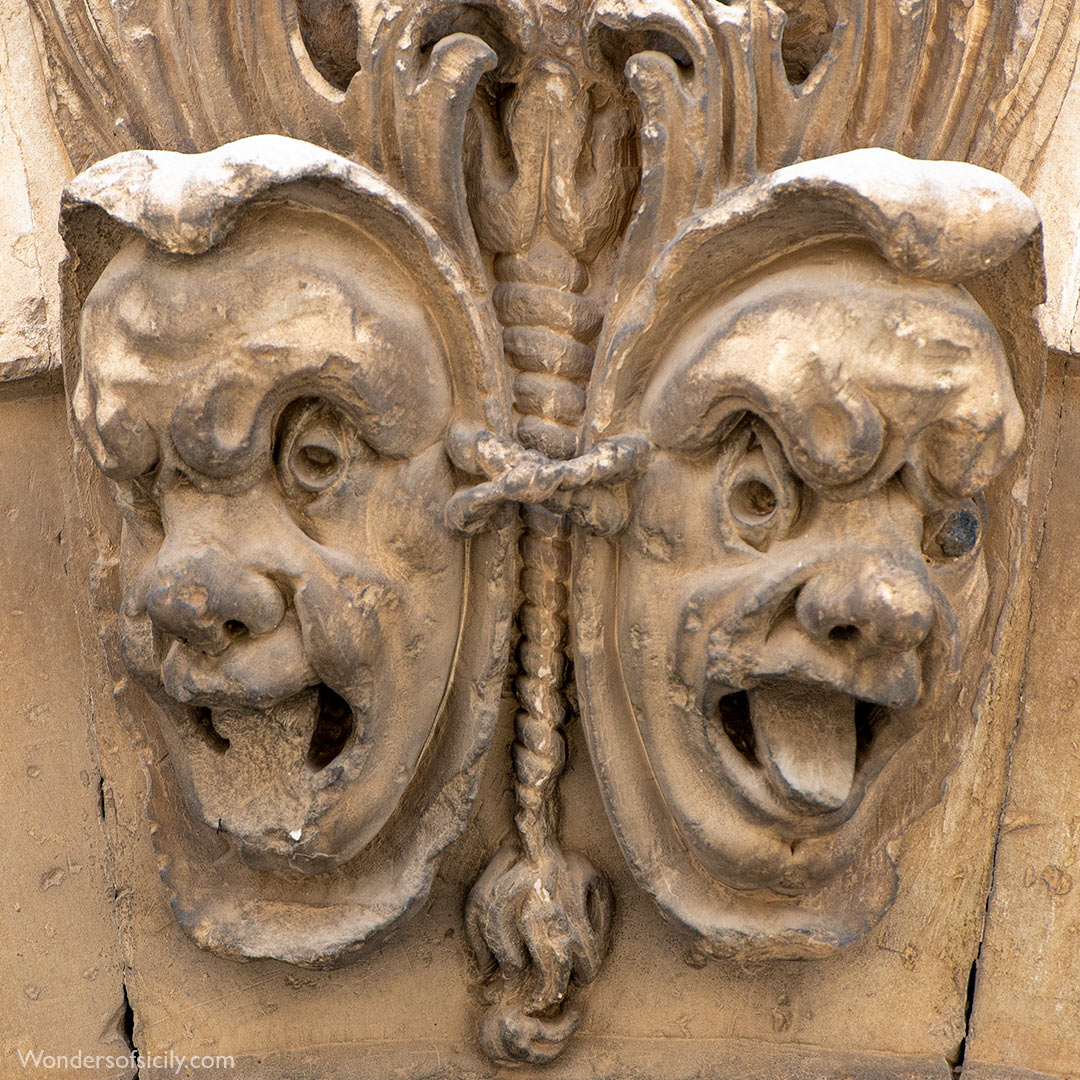
A grotesque in Modica.
Alesa Arconidea - Aleister Crowley in Cefalù - Bagheria - Balconies in Sicily - Baron Wilhelm von Gloeden - Baroque architecture in Sicily - Birds in Sicily - Caccamo - cars in Sicily - Castelmola - Cats in Italy - Collesano - Death in Sicily - Death in Sardinia - Entella - Film locations in Sicily - Fish, fishermen and fish markets in Sicily - Gela - Gibilmanna - Greeks in Sicily - Halaesa Arconidea - insects in Sicily - Linguaglossa - Lizards in Sicily - Maps of Sicily - Monreale Cathedral - Monreale Cloister - Life in Sicily - Mosaics in Sicily - Mount Etna - Museums and Exhibitions - Normans in Sicily - Palermo: Museum of the Holy Inquisition - Palermo: the Norman Palace - Palermo: Oratorio del SS. Rosario, San Domenico - Palermo: the Palatine Chapel (Cappella Palatina) - Palermo: Richard Wagner in Sicily - Palermo: La Zisa - Palermo: Chiesa Santa Maria della Catena (Church of Saint Mary of the Chain) - Syracuse: The Archeological Park - Tommaso Fazello - Tuna fishing in Sicily (La Mattanza) - Videos - Villa Palagonia (Bagheria) "The Villa of Monsters" (Villa dei Mostri) - Villa Romana del Casale (near Piazza Armerina) - Sicily in Art - Sicilian Art and Artists - The White Lotus season 2 locations in Sicily -
Francesco "Frank" A. Lentini
Born in Rosolini, Sicily (between Noto and Modica), Francesco "Frank" A. Lentini became known for having three legs, four feet and two sets of genitals. Lentini was born with a parasitic twin. The twin was attached to Lentini's body at the base of his spine and consisted of a pelvis bone, a rudimentary set of male genitalia and a full-sized leg extending from the right side of Lentini's hip, with a small foot protruding from its knee. At the age of eight, Lentini's family moved to the United States. Lentini then entered the sideshow business as The Great Lentini, joining the Ringling Brothers Circus act. His career spanned over forty years and he worked with every major circus and sideshow including Barnum and Bailey and Buffalo Bill's Wild West Show. Lentini was so respected among his peers that he was often called "The King". In his youth, Lentini used his extraordinary third leg to kick a football across the stage, hence his show name, the Three-Legged Football Player. He married Theresa Murray, three years younger than he, and they had four children: Josephine, Natale, Frank and James. Francesco Lentini died in Jacksonville, Florida on 22 September, 1966 at the age of 82.

